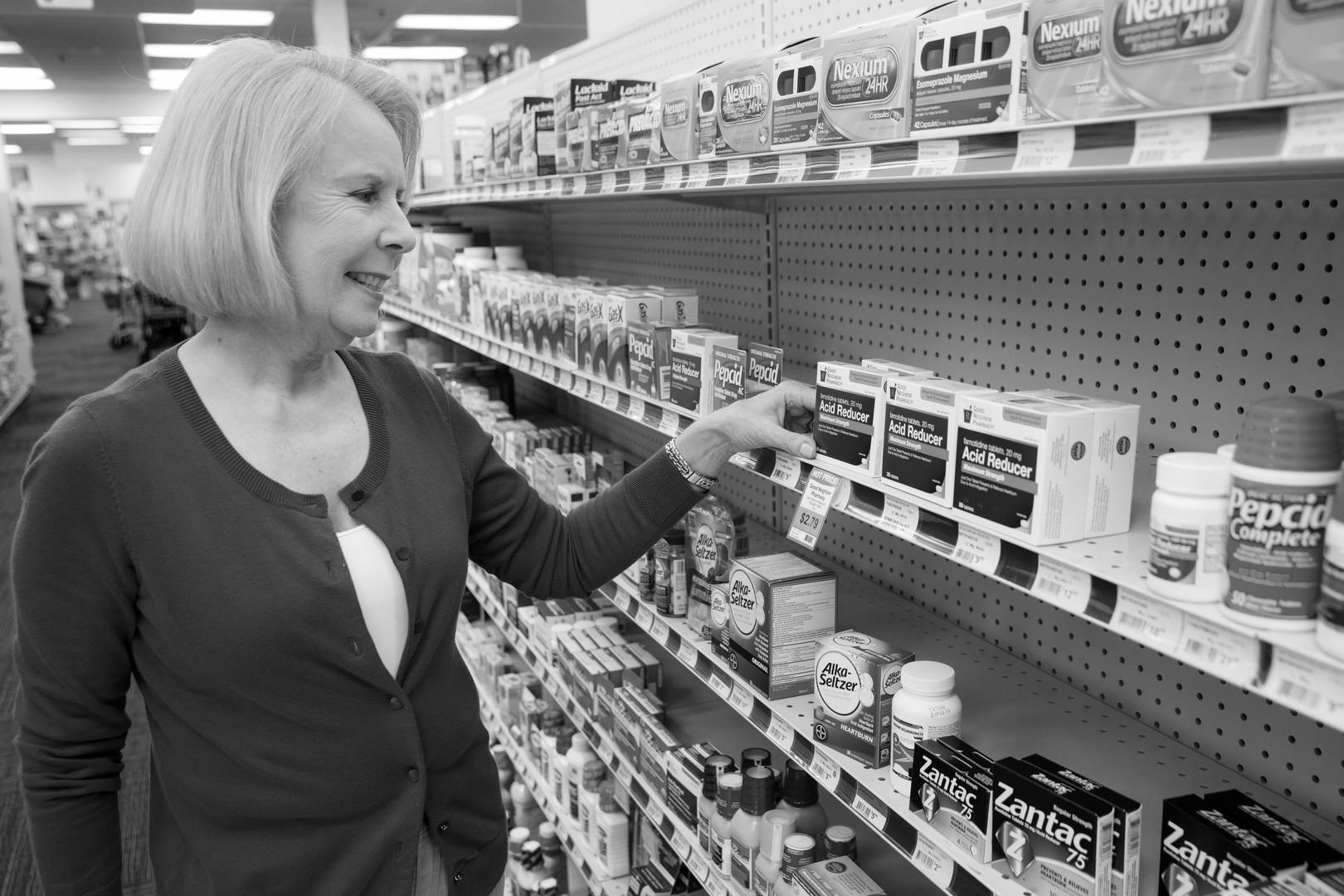Smoothing Out Speed Bumps in Your Pharmacy Front End
By Andy Clarey

The good news is that creating a positive patient experience doesn’t have to be difficult. In fact, front-end optimization starts with a common-sense approach built on being alert, attentive, persistent and creative with your OTC merchandising.
Paying attention to the front end
When was the last time you
cast a critical eye on the appearance of your store? Sure, you’re busy filling prescriptions and
counseling patients, but it’s worth your while to look at things from the
consumer’s perspective. Would you want to enter through a rutted parking lot, walk
down dirty aisles, browse disheveled shelves, squint due to poor lighting or be
frustrated by promotional tags sadly out of date? Definitely not.
All these things are
impediments to your customers as they try to make a purchase in your store. If
there are too many of these obstacles standing in their way, customers will
simply turn around and leave rather than try to navigate their way past them.
One of the best ways to eliminate the hitches in
your store is to appoint a trusted staffer—someone who really cares about the
look and functional layout of the store—to take charge of the pharmacy front
end. Give your front-end manager responsibility for keeping things clean and
bright, with properly promoted products in all the right spots.
Stocking the shelves
With more than 80 classes of OTC medications available to U.S. pharmacies,1 the front-end manager has to stay on top of what patients want and need. This person should tap into widely available consumer research and national pharmacy data to identify top-selling items.Planograms—schematic renderings of pharmacy departments and how specific OTC products should be displayed to maximize sales—can be used to guide your front-end manager on which items to stock and where. Pharmacy planograms depict how your shelves should look to the consumer, with sizes ranging in standard increments from four feet up to 16 feet. So, for example, if you have an 8-foot area dedicated to cough and cold remedies, a planogram will show your manager exactly how to display those items within the allotted space to make it as easy as possible for customers to find what they need quickly. And as these pharmacy planograms are updated throughout the year, your front-end manager should reorganize shelves as needed to ensure slow-moving items get replaced with higher volume products.
Related, each aisle in your store should feature an end cap display that’s highly visible as customers peruse. This helps make your most popular OTC items that much easier to locate. Plus, you can rotate your end caps on a seasonal basis to capitalize on fluctuations in demand. For example, tissues, cough drops, hand sanitizers and pain relivers should be prominent in the winter months, and then allergy medications and first aid items can be swapped in when the calendar flips over to springtime. End caps could also highlight a particular product class, such compression stockings, bath safety, arthritis, sleep aids, cosmetics or even pet care.2
Pilot testing shows that planograms and end caps do exactly what they’re supposed to do: simplify the shopping experience and increase sales. However, a key point here is that the front-end manager must be diligent in keeping shelves and end caps clean, fully stocked and neatly organized. Consumers naturally move products around as they compare items and make selections, so it’s up to your front-end manager to inspect displays at least once per day so that everything’s at peak presentation, including promotional tags. Otherwise, all the work put into your front end will only amount to more obstructions for your customers.
Leveraging your OTC inventory
Even though prescription drugs account for more than 90 percent of sales across all independent pharmacies,3 the profit margins of front-end products are higher than those of prescribed medications.4 And there’s no reason you can’t replicate successful merchandising strategies used by mainstream retailers. Encourage your front-end manager to experiment with new OTC initiatives, such as grouping companion goods next to established products, placing impulse items at your point-of-sale terminals and positioning drink coolers within the checkout area. The goal here is to accelerate your customers in their journey through your pharmacy, while giving them ample opportunities to pick up additional items along the way without slowing down.You can also try implementing a program of monthly front-end promotions to sharpen consumers’ perceptions that your locally operated independent pharmacy is more than capable of being as convenient and price competitive as chains and grocery stores on OTC items.
Keep in mind that, for many consumers, OTC products are their “first line of defense” in treating everyday conditions.5 Paying attention to and nurturing your pharmacy front end conveys a strong message that you care about your patients and are working hard to be their go-to resource for health and wellness. And when you make every visit to your store an effortless trip, you’ll find that patients will race back to your pharmacy for their next prescription or OTC run because of the positive experiences you’ve given them.
Struggling to streamline your front end?

2. National Community Pharmacists Association. End Caps. https://www.ncpanet.org/innovation-center/front-end-overhaul/front-end-overhaul-photo-galleries/overhaul-of-fame---end-caps
3. National Community Pharmacists Association. 2019 NCPA Digest. https://www.ncpanet.org/home/ncpa-digest
4. Drug Channels. Independent Pharmacy Economics Keep Deteriorating. https://www.drugchannels.net/2019/01/independent-pharmacy-economics-keep.html
5. Consumer Products Healthcare Association. Value of OTC Medicines to the U.S. Healthcare System. http://overthecountervalue.org/white-paper






